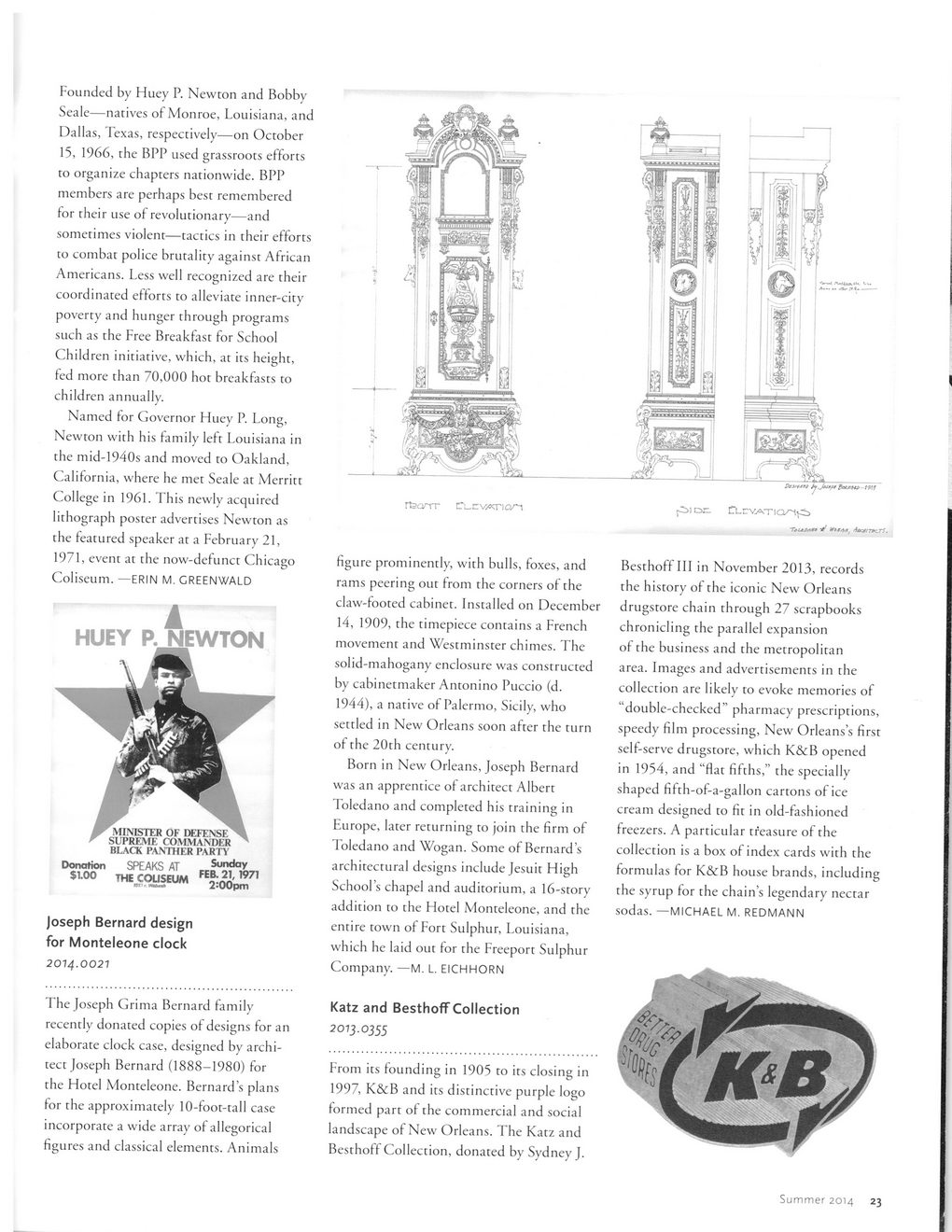This text was obtained via automated optical character recognition.
It has not been edited and may therefore contain several errors.
Founded by Huey P. Newton and Bobbv Seale—natives of Monroe, Louisiana, and Dallas, Texas, respectively—on October 15, 1966, the BPP used grassroots efforts to organize chapters nationwide. BPP members are perhaps best remembered for their use of revolutionary—and sometimes violent—tactics in their efforts to combat police brutality against African Americans. Less well recognized are their coordinated efforts to alleviate inner-city poverty and hunger through programs such as the Free Breakfast for School Children initiative, which, at its height, fed more than 70,000 hot breakfasts to children annually. Named for Governor Huey P. Long, Newton with his family left Louisiana in the mid-1940s and moved to Oakland, California, where he met Seale at Merritt College in 1961. This newly acquired lithograph poster advertises Newton as the featured speaker at a February 21, 1971, event at the now-defunct Chicago Coliseum. —ERIN M. GREENWALD A HUEY P. NEWTON Joseph Bernard design for Monteleone clock 2014.0021 The Joseph Grima Bernard family recently donated copies of designs for an elaborate clock case, designed by architect Joseph Bernard (1888-1980) for the Hotel Monteleone. Bernard’s plans for the approximately 10-foot-tall case incorporate a wide array of allegorical figures and classical elements. Animals rtearrr cTi_cv^crio/~i figure prominently, with bulls, foxes, and rams peering out from the corners of the claw-footed cabinet. Installed on December 14, 1909, the timepiece contains a French movement and Westminster chimes. The solid-mahogany enclosure was constructed by cabinetmaker Antonino Puccio (d. 1944), a native of Palermo, Sicily, who settled in New Orleans soon after the turn of the 20th century. Born in New Orleans, Joseph Bernard was an apprentice of architect Albert Toledano and completed his training in Europe, later returning to join the firm of Toledano and Wogan. Some of Bernard’s architectural designs include Jesuit High School’s chapel and auditorium, a 16-story addition to the Hotel Monteleone, and the entire town of Fort Sulphur, Louisiana, which he laid out for the Freeport Sulphur Company. —M. L. EICHHORN Katz and Besthoff Collection 2013.0355 From its founding in 1905 to its closing in 1997, K&B and its distinctive purple logo formed part of the commercial and social landscape of New Orleans. The Katz and Besthoff Collection, donated by Sydney J. dc. CLrvA-na/^^b TeLMt,t*» V 4/K&ITWC.T1. Besthoff III in November 2013, records the history of the iconic New Orleans drugstore chain through 27 scrapbooks chronicling the parallel expansion of the business and the metropolitan area. Images and advertisements in the collection are likely to evoke memories of “double-checked” pharmacy prescriptions, speedy film processing, New Orleans’s first self-serve drugstore, which K&B opened in 1954, and “flat fifths,” the specially shaped fifth-of-a-gallon cartons of ice cream designed to fit in old-fashioned freezers. A particular treasure of the collection is a box of index cards with the formulas for K&B house brands, including the syrup for the chain’s legendary nectar sodas. —MICHAEL M. REDMANN Summer 2014 23

New Orleans Quarterly 2014 Summer (23)